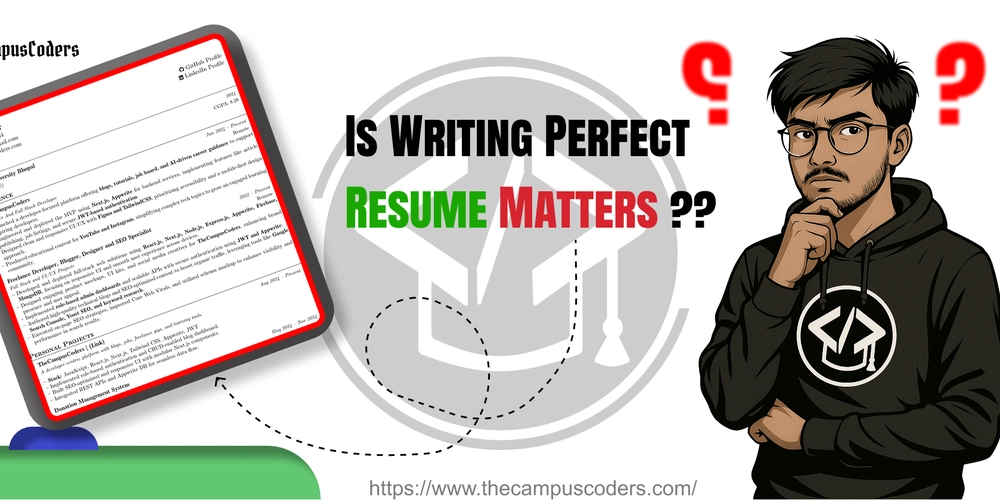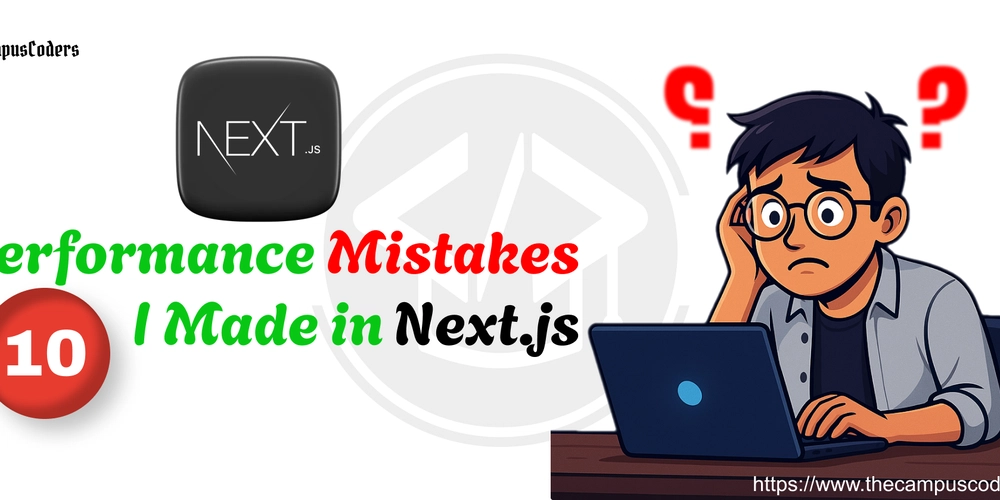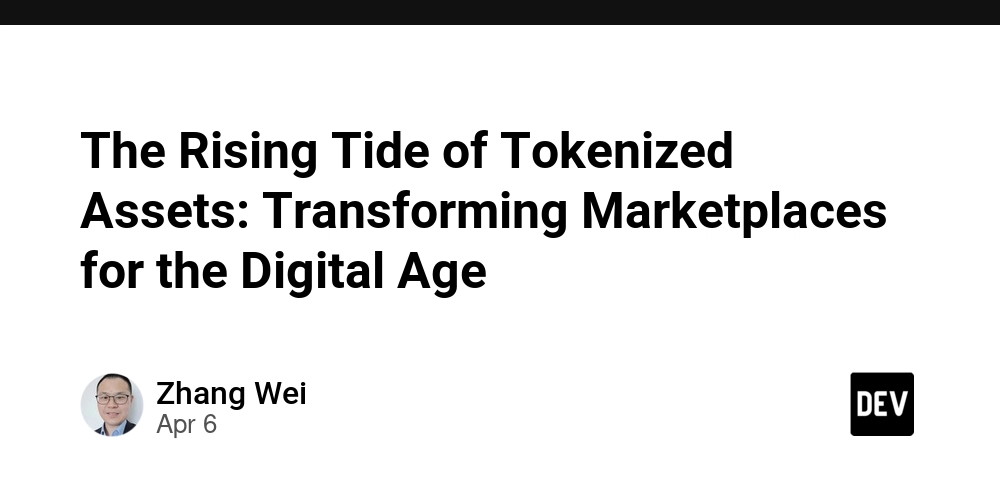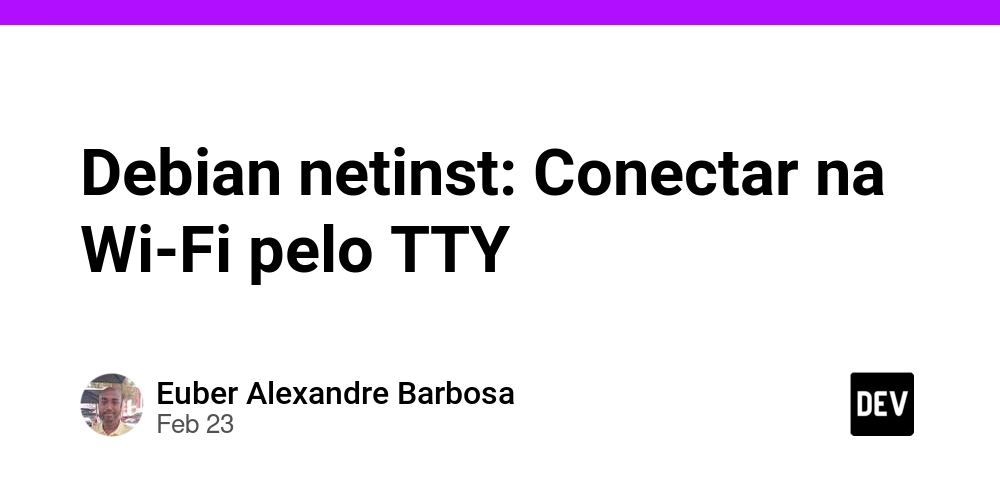How I Built My Job-Ready Developer Resume with Real Projects (And Why You Should Too)
1. Introduction “Everyone creates a nice-looking resume… but how many actually show what they’ve built?” That thought hit me one night while scrolling through job listings. I had applied to a few roles, shared my resume around—but something always felt off. As a developer, I didn’t just want to list my skills—I wanted to show that I build things, solve problems, and ship real stuff. But when I looked at my older resume, it felt like just another document full of buzzwords and no story. That’s when I decided: I need a resume that doesn’t just talk—it shows. Not just “React Developer” – but what I’ve actually built using React. Not just “Team Player” – but how I worked with a team to ship something real. This blog is my honest breakdown of how I rebuilt my resume, what I learned along the way, and how it helped me start getting real replies—even from people I didn’t directly apply to. 2. My Approach to Crafting a Powerful Resume I didn’t start with some fancy template. I opened a blank Notion page and asked myself one question: “If someone looks at my resume for just 10 seconds, will they understand what I actually do?” That question guided everything. Here’s the thought process I followed: Show Proof, Not Just Buzzwords Instead of dumping tech names, I made sure to highlight where I used them. For example: MongoDB – Used in Campus Store to manage product inventory and user data. ATS Friendly but Human Too Yes, resumes need to pass through bots—but they should also make sense to real people. I kept the layout clean, sections well-labeled, and avoided overdesigning. Lead with Projects My projects aren’t side notes—they’re the main story. I put them above work experience, because that’s where my true value shows: in what I’ve built. Separate the Stack Smartly Instead of cramming everything into one long list, I organized it: languages, frameworks, tools. This made it super easy for recruiters to scan and find what they needed. Highlight Real Outcomes Wherever possible, I added actual results: “Reached 5K+ learners through Campus Coders” “Generated first set of product orders via Instagram” It wasn’t about using big words—it was about being honest, clear, and focused on what I’ve actually done, and where I’m headed next. 3. Resume Section Breakdown (And Why I Structured It This Way) Here’s exactly how I structured my resume—and why every section has a purpose. 1. Header (No fluff, just clarity) Name, Role, Location, Contact, LinkedIn, Portfolio I made sure everything was clickable—especially for recruiters who want to quickly see my work. 2. Summary (Small, sharp, and focused) Not a life story—just a 2-3 liner that says: > “I’m a MERN Stack Developer who builds real-world solutions and believes in learning by doing.” Instead of just listing tech buzzwords, I used this section to set the tone: This resume is built around action.

1. Introduction
“Everyone creates a nice-looking resume… but how many actually show what they’ve built?”
That thought hit me one night while scrolling through job listings.
I had applied to a few roles, shared my resume around—but something always felt off.
As a developer, I didn’t just want to list my skills—I wanted to show that I build things, solve problems, and ship real stuff.
But when I looked at my older resume, it felt like just another document full of buzzwords and no story.
That’s when I decided: I need a resume that doesn’t just talk—it shows.
Not just “React Developer” – but what I’ve actually built using React.
Not just “Team Player” – but how I worked with a team to ship something real.
This blog is my honest breakdown of how I rebuilt my resume, what I learned along the way, and how it helped me start getting real replies—even from people I didn’t directly apply to.
2. My Approach to Crafting a Powerful Resume
I didn’t start with some fancy template.
I opened a blank Notion page and asked myself one question:
“If someone looks at my resume for just 10 seconds, will they understand what I actually do?”
That question guided everything. Here’s the thought process I followed:
Show Proof, Not Just Buzzwords
Instead of dumping tech names, I made sure to highlight where I used them.
For example: MongoDB – Used in Campus Store to manage product inventory and user data.ATS Friendly but Human Too
Yes, resumes need to pass through bots—but they should also make sense to real people. I kept the layout clean, sections well-labeled, and avoided overdesigning.Lead with Projects
My projects aren’t side notes—they’re the main story.
I put them above work experience, because that’s where my true value shows: in what I’ve built.Separate the Stack Smartly
Instead of cramming everything into one long list, I organized it: languages, frameworks, tools.
This made it super easy for recruiters to scan and find what they needed.-
Highlight Real Outcomes
Wherever possible, I added actual results:- “Reached 5K+ learners through Campus Coders”
- “Generated first set of product orders via Instagram”
It wasn’t about using big words—it was about being honest, clear, and focused on what I’ve actually done, and where I’m headed next.
3. Resume Section Breakdown (And Why I Structured It This Way)
Here’s exactly how I structured my resume—and why every section has a purpose.
1. Header (No fluff, just clarity)
- Name, Role, Location, Contact, LinkedIn, Portfolio
- I made sure everything was clickable—especially for recruiters who want to quickly see my work.
2. Summary (Small, sharp, and focused)
- Not a life story—just a 2-3 liner that says: > “I’m a MERN Stack Developer who builds real-world solutions and believes in learning by doing.”
- Instead of just listing tech buzzwords, I used this section to set the tone: This resume is built around action.





































































![New Apple iPad mini 7 On Sale for $399! [Lowest Price Ever]](https://www.iclarified.com/images/news/96096/96096/96096-640.jpg)

![Rapidus in Talks With Apple as It Accelerates Toward 2nm Chip Production [Report]](https://www.iclarified.com/images/news/96937/96937/96937-640.jpg)








































































































_Christophe_Coat_Alamy.jpg?#)











































































![[The AI Show Episode 142]: ChatGPT’s New Image Generator, Studio Ghibli Craze and Backlash, Gemini 2.5, OpenAI Academy, 4o Updates, Vibe Marketing & xAI Acquires X](https://www.marketingaiinstitute.com/hubfs/ep%20142%20cover.png)
































































































































![From drop-out to software architect with Jason Lengstorf [Podcast #167]](https://cdn.hashnode.com/res/hashnode/image/upload/v1743796461357/f3d19cd7-e6f5-4d7c-8bfc-eb974bc8da68.png?#)



![[FREE EBOOKS] The Kubernetes Bible, The Ultimate Linux Shell Scripting Guide & Four More Best Selling Titles](https://www.javacodegeeks.com/wp-content/uploads/2012/12/jcg-logo.jpg)



































.jpg?#)



.png?#)






















































